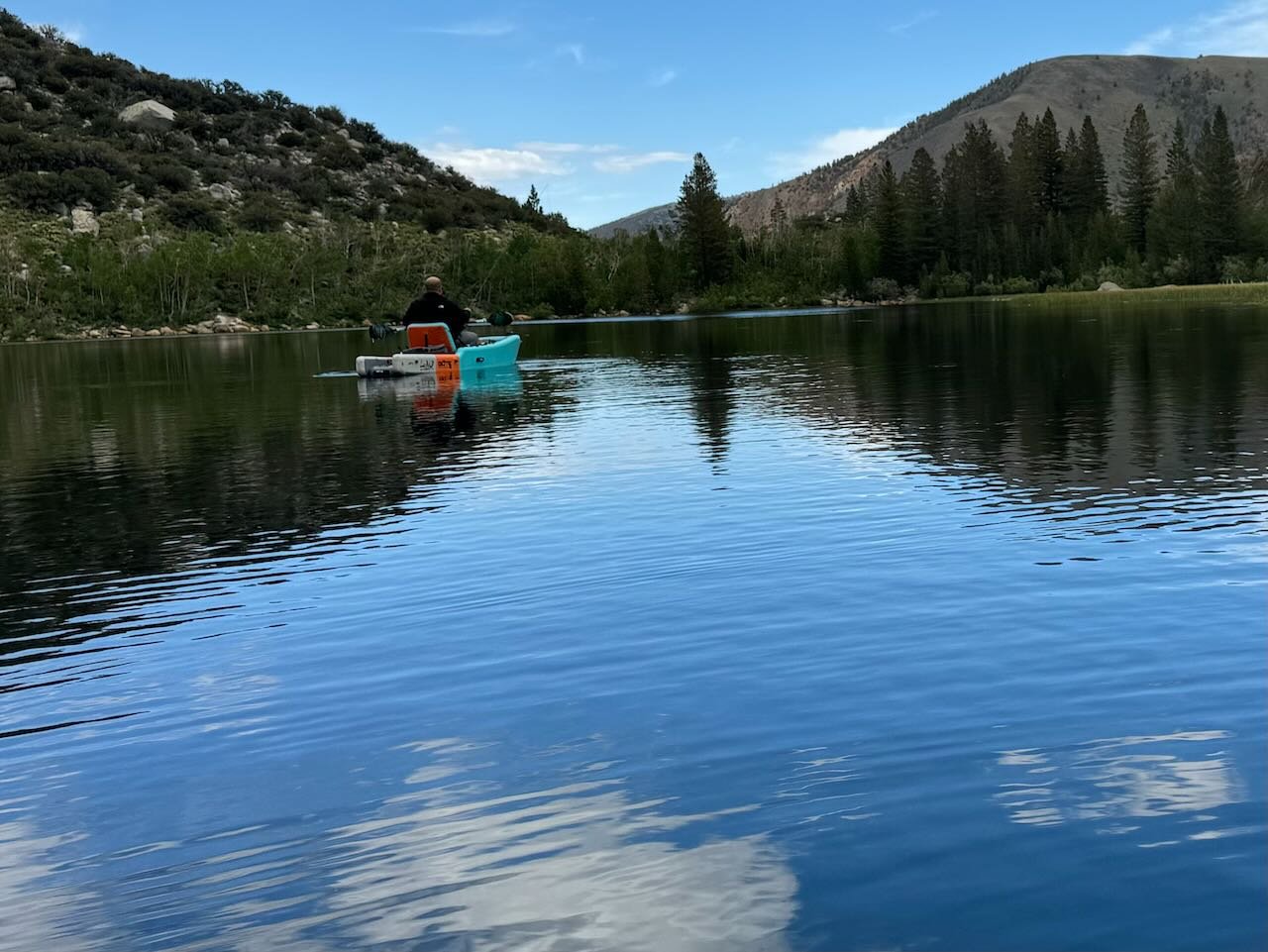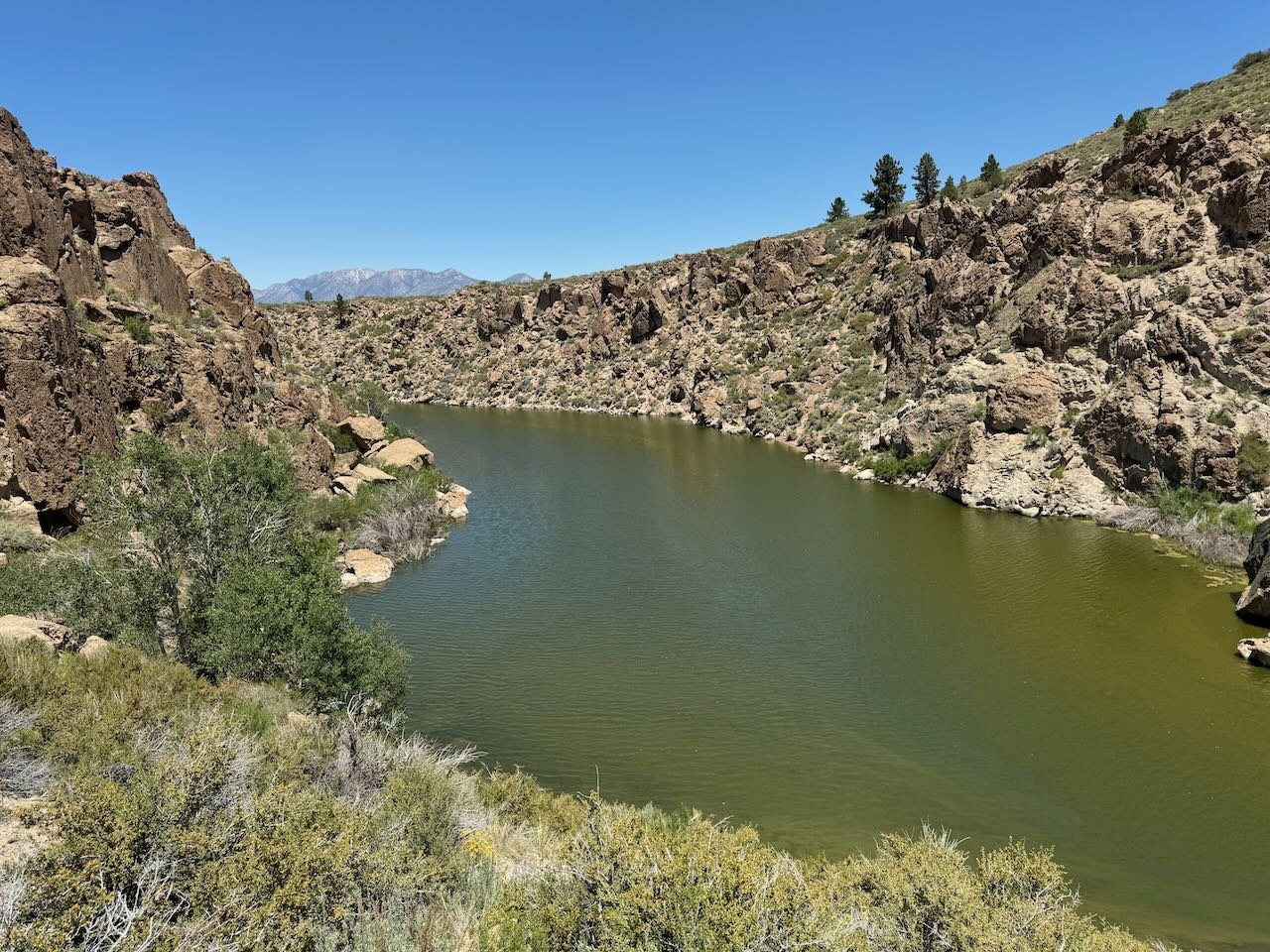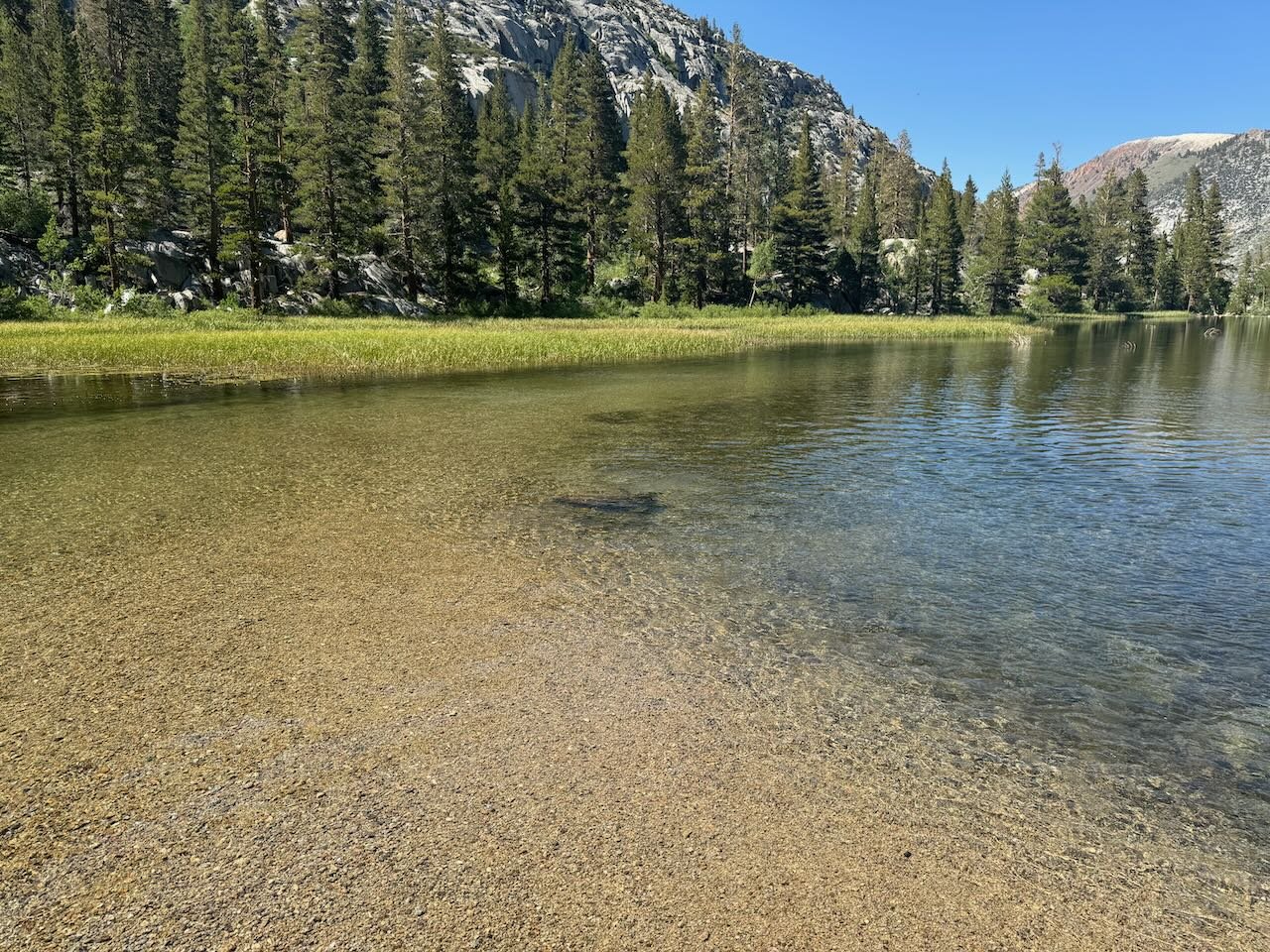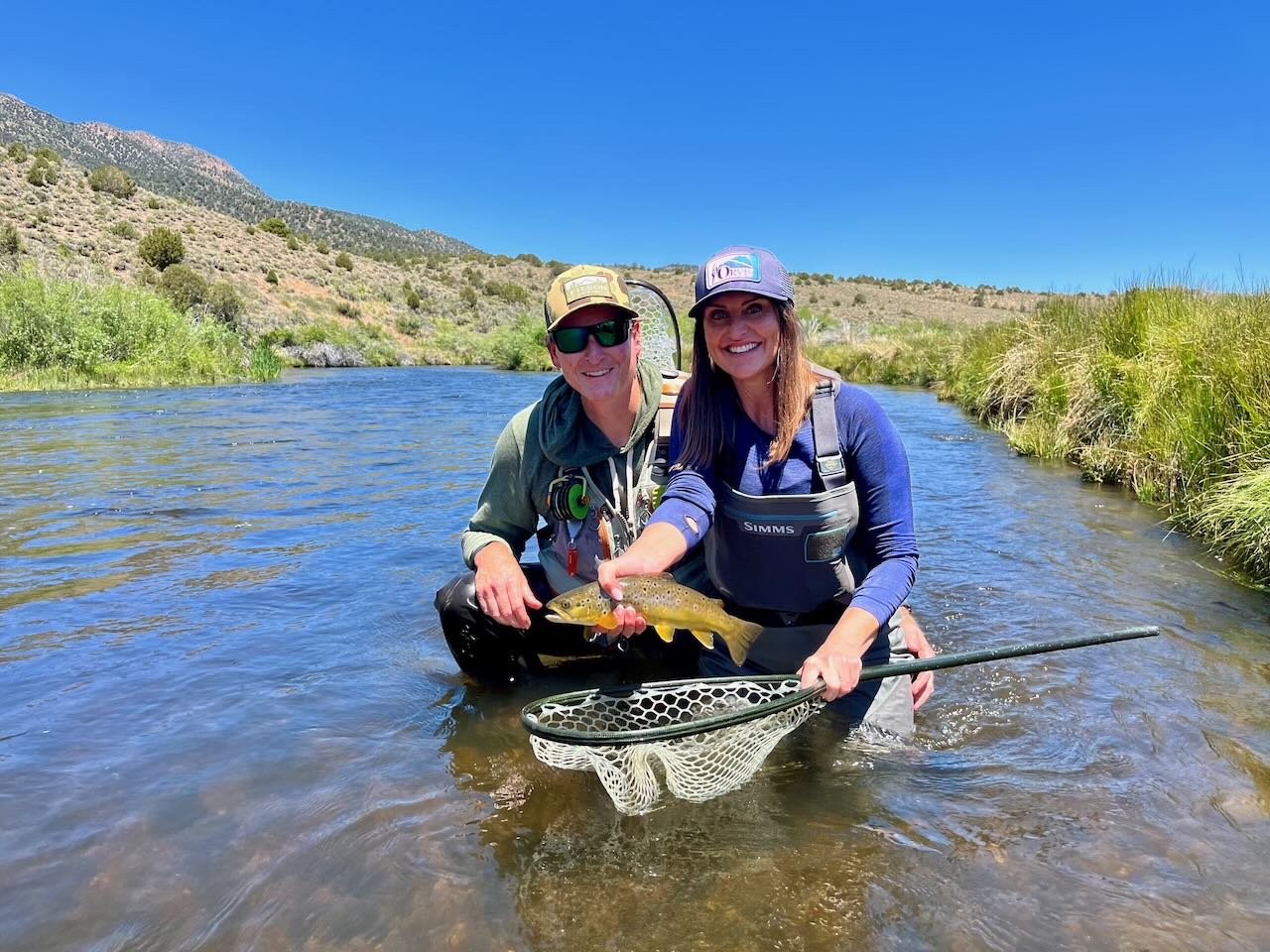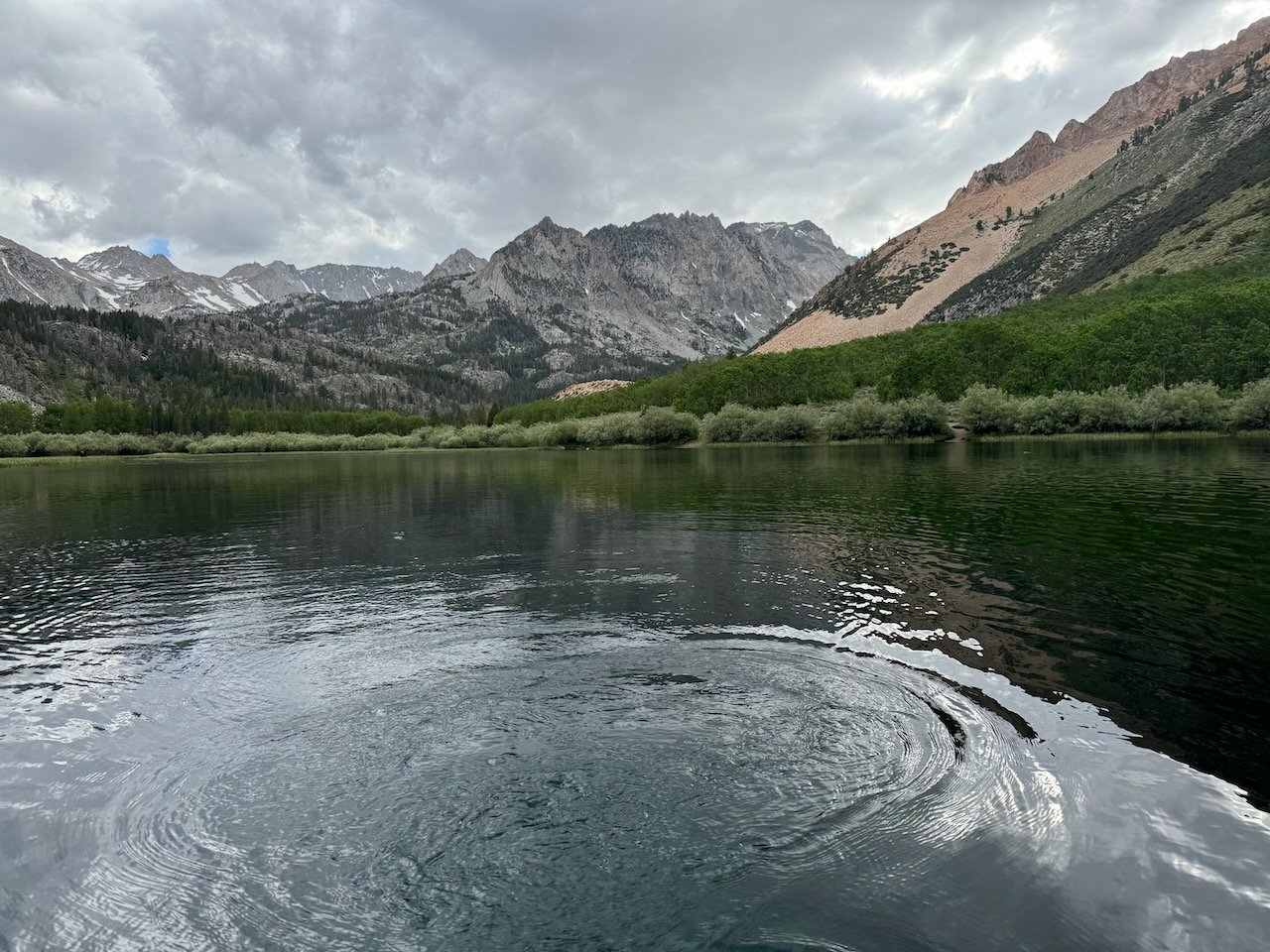It’s summer time in the Eastern Sierra and the trout are feeding on nymphs and dries. Midges, mayflies, caddis and stoneflies are hatching. Little yellow stoneflies, pale morning dun mayflies, blue wing olive mayflies, trico mayflies, callibaetis mayflies, olive midges, gray midges, olive caddis and brown caddis are the insects the trout are feeding on. Adult hoppers are starting to show up on Eastern Sierra waters. It’s hot out there and wet wading is the way to go. Been monitoring water temperatures and they have not approached the 70 degree level that would require fly fishers to voluntarily stop fly fishing. High country trails and waters are devoid of snow and offering good fly fishing opportunities. Now is the time to make those memories fly fishing the waters of the Eastern Sierra.
Hoppers are just starting to show up on the banks of streams, creeks and canals of the Eastern Sierra..
Hot Creek
Interpretive Site:
It’s summer dry fly time on the creek. The mornings start with tricos hatching, then moves on to blue wing olive mayflies followed by gray caddis hatching. For the trico hatch fly fishers need to determine what stage of the hatching mayflies the trout are feeding on. In the case of tricos the trout feed on the male or female trico dun and the trico spinner. I carry size 22 male and female trico parachutes and size 22 trico spinners. Blue wing olive parachutes in size 20 will fool the trout feeding on the hatching blue wing olive mayflies. For the gray caddis try fly fishing with size 20 gray parachute caddis.
Afternoon clouds are helping to cool off fly fishers fishing in the canyon section of Hot Creek where fly fishers are enjoying dry fly activity.
Hot Creek
Canyon Section:
Long sunny days and summer heat helps grow the weed beds in Hot Creek Canyon. This time of the year the weed beds are at full growth and fly fishers need to learn to float their flies in the narrow channels between the weed beds. Mas Okui was one of my mentors from Sierra Pacific Fly Fishers who taught me how to cast an overly long tippet so it would pile up in the tiny lanes between the weeds. The fly would float down the tiny lane pulling the piled up leader line giving the fly a drag free drift. This is a deadly method for fishing dry flies in Hot Creek when the weed beds are at full growth. Trico’s in the morning followed by blue wing olive mayflies, pale morning dun mayflies and then ending in early afternoon with a gray caddis. Fish with size 22 female trico dun parachutes, size 22 trico spinners, size 20 blue wing olive parachutes, size 16 pale morning dun parachutes and size 20 gray parachute caddis.
A windy afternoon on the shores of the north side of McGee Bay on Crowley Lake.
Crowley Lake
North Landing:
The North Landing Road opened up on Saturday July 13, 2024. I drove the North Landing Road to North Landing and then to Sandy Point and back to the gate. The roads are drivable around the lake. It means fly fishers with floatation craft like paddle boards, float tubes and kayaks can access the north side of McGee Bay and the west side of the Owens River arm of Crowley Lake. Float tubing the inlet of McGee Bay with a full sink line or sink tip line in and around the weed beds with size 14 callibaetis nymphs, size 10 damsel fly nymphs and size 10 olive wooly buggers is producing cruising trout looking for food. Suspending a midge from three inches to four feet above the muddy bottom is where fly fishers need to be fishing their midge imitations with tiger midges, zebra midges, gray midges, blood midges and albino Barron midges in 10 to 15 feet of water.
Angela Linzay from La Berne showing of a fat juvenile brown trout that took a size 18 bead head flash back pheasant tail nymph fished under an indicator.
Upper Owens River
Above Benton Crossing Bridge:
Now is the time to be on the upper Owens River if you are a beginner or accomplished fly fisher. Hatches of trico mayflies, blue wing olive mayflies, pale morning dun mayflies and caddis have the trout feeding on adults and nymphs. I’ve seen adult hoppers starting to fly around the banks of the upper Owens. Is this the start of the hopper hatch? Time will tell. If you’re on the water early you will find the trico mayflies on the water. Start with a parachute dun pattern. At the end of the trico hatch is the time to use a trico spinner pattern. There has been a blue wing olive mayfly hatch following the trico hatch. Mid-morning fly fishing with dries slows down until early afternoon when the pale morning dun mayflies hatch. If you’re on the water in the evening you will be treated to a caddis hatch. Nymphing under an indicator or with a Euro rig is producing trout all day. Working your nymphs in the pockets around the weed beds or in the deep pools and holes below riffles is producing trout with size 18 bead head flash back pheasant tail nymphs, size 16 bead head flash back gold ribbed hare’s ears, size 18 olive quilldigon, size 16 hot spot pheasant tail nymphs, size 16 split back pale morning dun nymphs and size 16 brown caddis emergers. For adults use size 22 trico parachutes, size 22 trico spinners, size 18 blue wing olive parachutes, size 16 pale morning dun parachutes and size 16 elk hair caddis.
Kelly Wagner from Bishop taking advantage of the cloud cover to float dry flies on Bishop Creek Canal for wild brown trout in the afternoon.
Bishop Creek Canal
Behind Bishop Veterinary Hospital:
Day time temperatures are high and uncomfortable on Bishop Creek during the day. On days when the cloud cover comes in fly fishers will find day time temperatures that are comfortable. Using elk hair caddis and hoppers during the afternoons, especially windy afternoons, will produce trout feeding on the surface. The evening caddis bite continues to be good and a size 16 peacock elk hair caddis will produce wild brown trout and stocked rainbow trout. Nymphing with a stoner nymphs and green/gold Prince nymph will produce trout during the day even in the hot temperatures.













